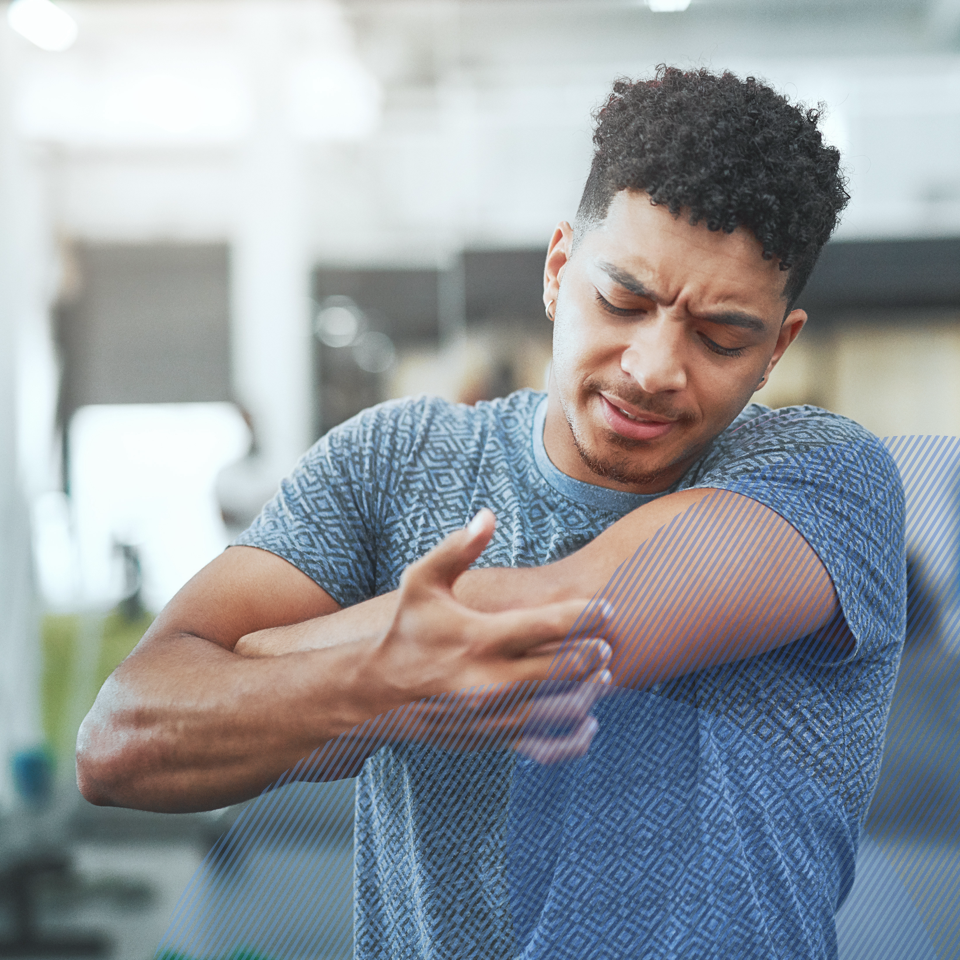Golfer's elbow treatment online
Get advice about golfer’s elbow with an online diagnosis, treatment plan, and electronically filled prescriptions from board-certified physicians 24/7.

Golfer's elbow symptoms can vary, but patients typically experience:
- Pain in elbow or wrist
- Stiffness
- Tenderness
- Tingling
- And more.
Diagnosing and Treating Golfer's Elbow Online
Golfer’s elbow is a condition caused by prolonged use of certain muscles in the forearm. Just because this condition is titled “golfer’s elbow” does not mean one has to be playing golf to get this condition. Many activities can lead to golfer’s elbow including incorrectly gripping a club or racket, throwing an object, or lifting weights. Specific sports that have a high risk of developing golfer’s elbow, besides golf, include tennis, bowling, and baseball. There are also a number of specific activities that are prone to golfer’s elbow, including raking, hammering, cooking, painting, and construction work.
Golfer’s elbow is very similar to tennis elbow, which is also caused by overuse of tendons in the forearm, but golfer’s elbow differs from tennis elbow in that golfer’s elbow affects the tendons on the inside of the elbow while tennis elbow impacts the tendons on the outside. Both are forms of elbow tendonitis.
During a video consult on Amwell your doctor will ask you a series of targeted questions to determine if your symptoms point to golfer’s elbow. Then your provider will proceed to determine the best treatment plan for you. Your provider may recommend in-person examination by a specialist if needed. Your treatment plan is based on the duration and severity of your symptoms and your medical history.
Once a diagnosis has been made, your doctor will go over the risks and benefits of the various treatment plans. Treatment for golfer’s elbow is different depending on the severity.
Options for treatment of golfer’s elbow may include:
- Rest
- Ice
- Brace
- Stretching
- In rare cases, surgery


Physical therapy